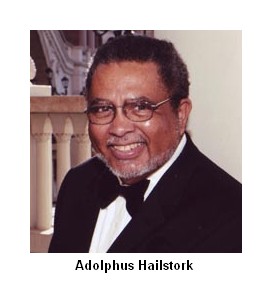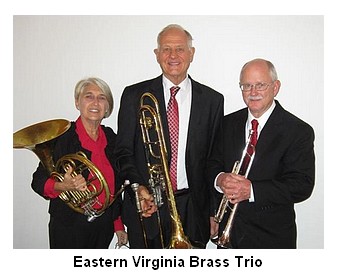
Reviews
Staying within a theme of music related to the Civil War and the slaves’ desire for freedom, each choral group selected 12 to 15 minutes of music of their choosing. The eighteen-member Schola Cantorum of Virginia, directed by Agnes Mobley-Wynne, reprised music from their 2011 CD Union and Liberty: Keep Your Lamps!, Two Brothers (one wore blue, one wore grey) by the men’s ensemble which captured the personal loss of loved ones; the women’s ensemble sang Sometimes I Feel Like a Motherless Child arranged by Agnes Mobley-Wynne; seven basses gave depth and power to the sound of Let My People Go. The ethnically and racially diverse, nineteen-member F. Ludwig Diehn Chorale of Old Dominion University, directed by Dr. Nancy Klein with Bobbie Kesler-Corleto at the piano, selected three Civil War songs: a Union song, The Battle Cry of Freedom, highlighted the sweetness of college singers’ sound; in Tenting Tonight the men’s voices captured the pathos of war, especially the last line, “dying tonight"; In Johnny Aroo’ the women’s ensemble expressed the bitterness of their men returning with crippled bodies; the spiritual Ride the Chariot, featured the flute-like voice of Olivia Rominiyi and the clean bass of Logan Kenison as soloists and was substituted when the music for Hailstork’s So Glad arrived late. The third set was played by the Eastern Virginia Brass Trio—Wendell Banyay, trumpet; Marlene Ford, horn; Robert Ford, trombone. It featured traditional Civil War era songs arranged by Percy F. Hall, including When Johnny Comes Marching Home and Quadrille Suites 1 & 2, period pieces arranged for brass trio. The 26 member I. Sherman Greene Chorale came next, directed by Elizabeth Eccles with Randy M. Watson at the piano. The group taps into the historic energy of the African-American choral tradition, creating layers of near-transparent sound that build, one on the other. The spirit is moving in Go Down 'n the Valley and Pray and in the Ukrainian Alleluia set by Craig Courtney. The arrangement by John W. Work of Lord, I’m out of Here on Your Word has the raw energy of a field holler and the vulnerability by bass Curtis Dixon was almost painful to feel. The closing spiritual, Walk Together Children, featured Arnetta Sherrod and had such incredible energy and precision that I had to restrain myself from jumping up to dance. As the trio grew silent, the seventy-voice, integrated chorus, conducted by Dr. Klein, began singing texts drawn from Walt Whitman’s elegy for Abraham Lincoln which chronicled the grief of a nation for its murdered leader: “When lilacs last in the dooryard bloomed…I mourned and yet shall mourn with every returning spring.” The voices sang of alternately stark and soaring images dreaming of “a thousand voices rising strong and solemn” in memory of the fallen leader. The singers captured the sense of deep pain and the love that can heal the nation. In the Finale the Eastern Virginia Brass Trio played the opening (arr. Mark Gerhardt) from Battle Hymn of the Republic by William Seffe (arr. Peter J. Wilhousky). The mixed chorus with piano and brass and the audience joined in the closing “Glory! Glory! Hallelujah! His truth is marching on.” The joy within the Attucks Theater was palpable to all, drawing us together into an integrated community celebrating the music of an African-American composer sung by three local choral groups, one white, one black and one integrated. The ethnic peace longed for in our nation is still progressing, but this is not the end of the journey, only a high point on the road. |
 The Civil War (1864-2014) brought an end to slavery, the deepest flaw built into the foundation of the United States. An integrated audience attended a musical evening at the historically black Attucks Theater in Norfolk, Virginia hearing the music of the Civil War of 150 years ago. The evening concluded with new music by Adolphus Hailstork: Ghosts in Grey and Blue for brass trio and When Lilacs Last in the Dooryard Bloomed (text Walt Whitman) from his Ghost Chorales for chorus. Dr. Hailstork described the evening as “something like a requiem for all the fallen.”
The Civil War (1864-2014) brought an end to slavery, the deepest flaw built into the foundation of the United States. An integrated audience attended a musical evening at the historically black Attucks Theater in Norfolk, Virginia hearing the music of the Civil War of 150 years ago. The evening concluded with new music by Adolphus Hailstork: Ghosts in Grey and Blue for brass trio and When Lilacs Last in the Dooryard Bloomed (text Walt Whitman) from his Ghost Chorales for chorus. Dr. Hailstork described the evening as “something like a requiem for all the fallen.” The last set featured the three choral groups and the brass trio who brought us the world premiere of music by Dr. Adolphus Hailstork. The Eastern Virginia Brass opened with the second movement of his eight movement Ghosts in Grey and Blue. Fanfare is a commemoration rather than a celebration of the war. Hornist Marlene Ford confided: “Every time we went from the Fanfare movement to the Epilogue, I was tearful. I don’t know why but I felt such sadness that I am glad my notes weren’t difficult so I could just sit with the feeling.” Epilogue, Cauldron of Peace, movement eight, set the stage emotionally for the choral piece that follows.
The last set featured the three choral groups and the brass trio who brought us the world premiere of music by Dr. Adolphus Hailstork. The Eastern Virginia Brass opened with the second movement of his eight movement Ghosts in Grey and Blue. Fanfare is a commemoration rather than a celebration of the war. Hornist Marlene Ford confided: “Every time we went from the Fanfare movement to the Epilogue, I was tearful. I don’t know why but I felt such sadness that I am glad my notes weren’t difficult so I could just sit with the feeling.” Epilogue, Cauldron of Peace, movement eight, set the stage emotionally for the choral piece that follows.